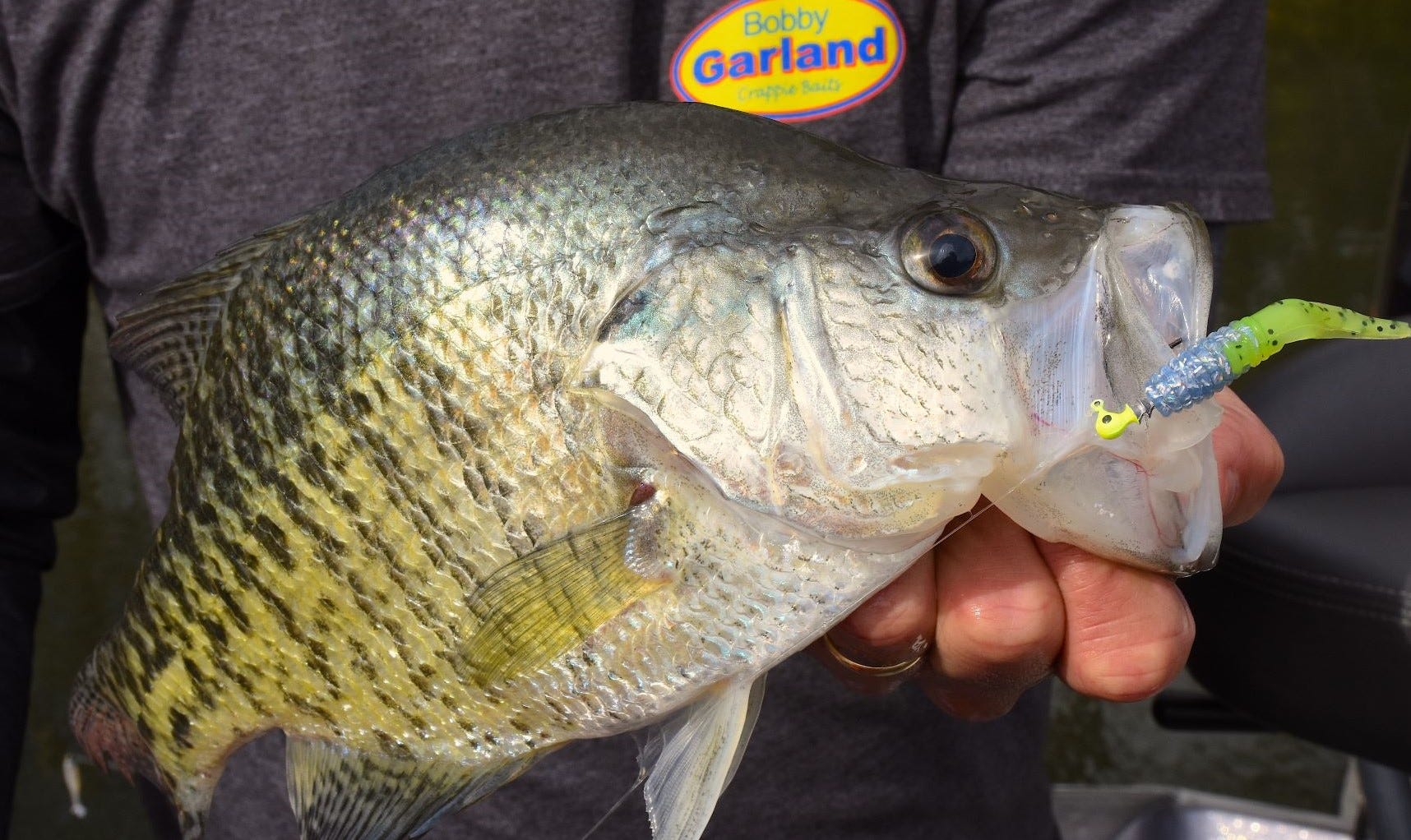- Apr 9, 2021
Learn Why Crappie Jigheads Matter
Don’t think for a moment that all jigheads are created equal or that the only real decision regarding these critical crappie catching components is the weight of head to choose.
With so much that is commonly discussed about crappie baits, the ways those baits move in the water and the significance of bait colors, important distinctions related to the heads that complement those baits get very little attention. Folks sometimes give passing mention of a jighead’s weight and occasionally color (both critical), but the conversation usually ends there.
We want to correct that because crappie jigheads matter, and many differ substantially from one another. Jigheads vary in weight, shape, eye positioning and angle, color, decoration, hook design and hook used, to name some of the most common variables. We’ll look at important variables one a time to help you make the best decisions.
Major Distinctions
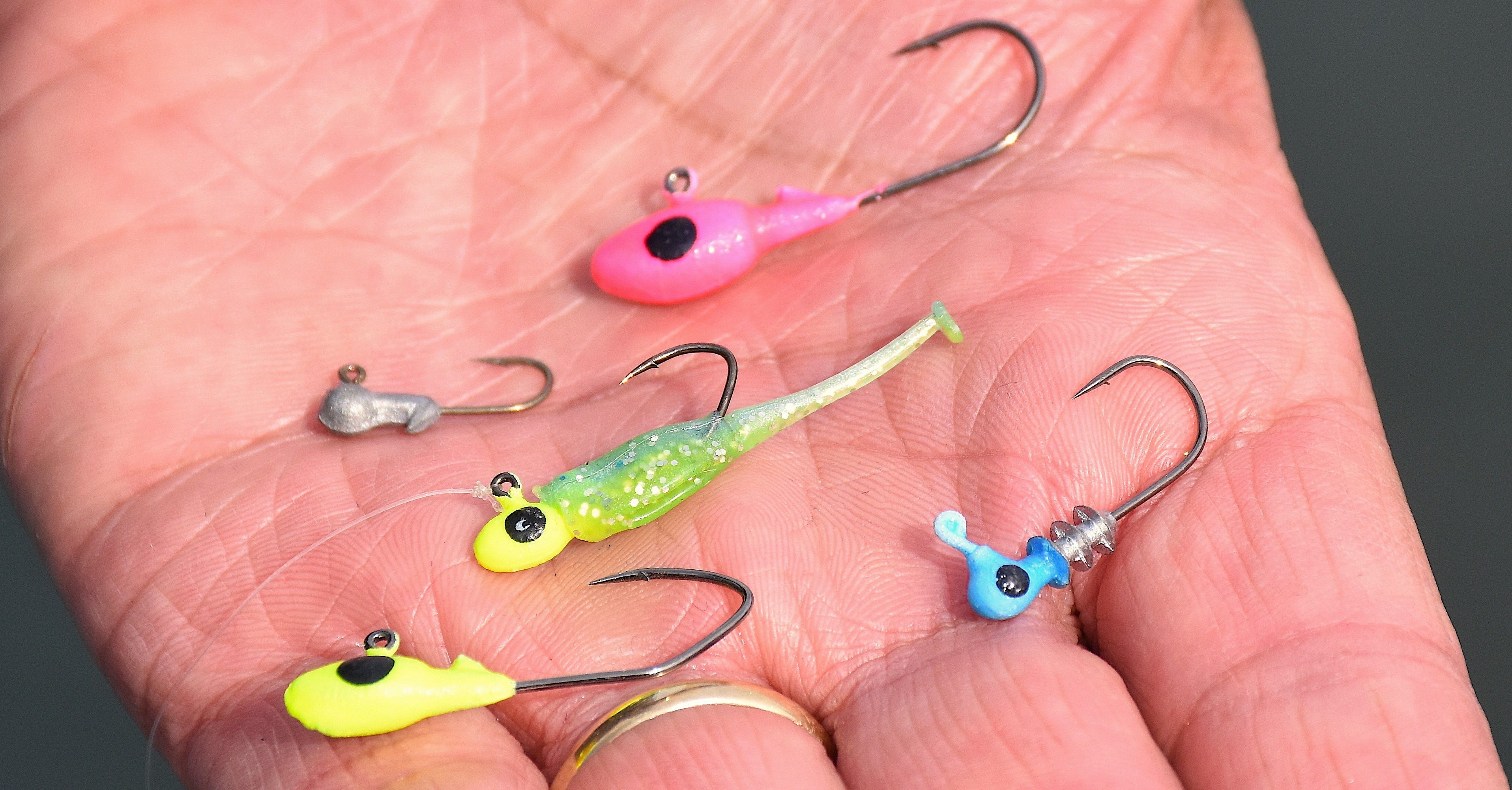

Starting with the most obvious, jighead weight is always an important factor. Depending on head weight, the same trolling approach or retrieve speed might put a bait 5 feet deep or 15 feet deep.
Heavier heads drop faster in the water column, cast farther and are easier to control for vertical presentations, which can be especially important when current or wind add influence. Light jighead weights, on the other hand, let you work slower and shallower and allow for less bold movements and more natural bait presentations.
A 1/16-ounce jighead is the middle of the road for crappie fishing and the most popular weight. Anglers who fish deeper commonly use 3/16- and 1/8-heads, sometimes going as heavy as ¼ ounce. At the other end of the spectrum, heads as light as 1/64 ounce get used for finesse applications.
Color is the next most obvious factor, and crappie anglers who pay attention virtually all agree that on some days jighead color makes a significant difference in how fish respond. Even live bait anglers commonly find the crappie to strongly prefer a minnow on a pink head over a minnow on a chartreuse head (or vice versa).
Color theories vary. Some anglers favor warm colors for bright days and cool colors for cloudy days or certain colors for specific water colors. Others seek to match (or contrast) head and body colors. The most important thing about jighead colors is to recognize that the color can make a difference and to be willing to experiment and allow the crappie to reveal their preferences.
Other Variables
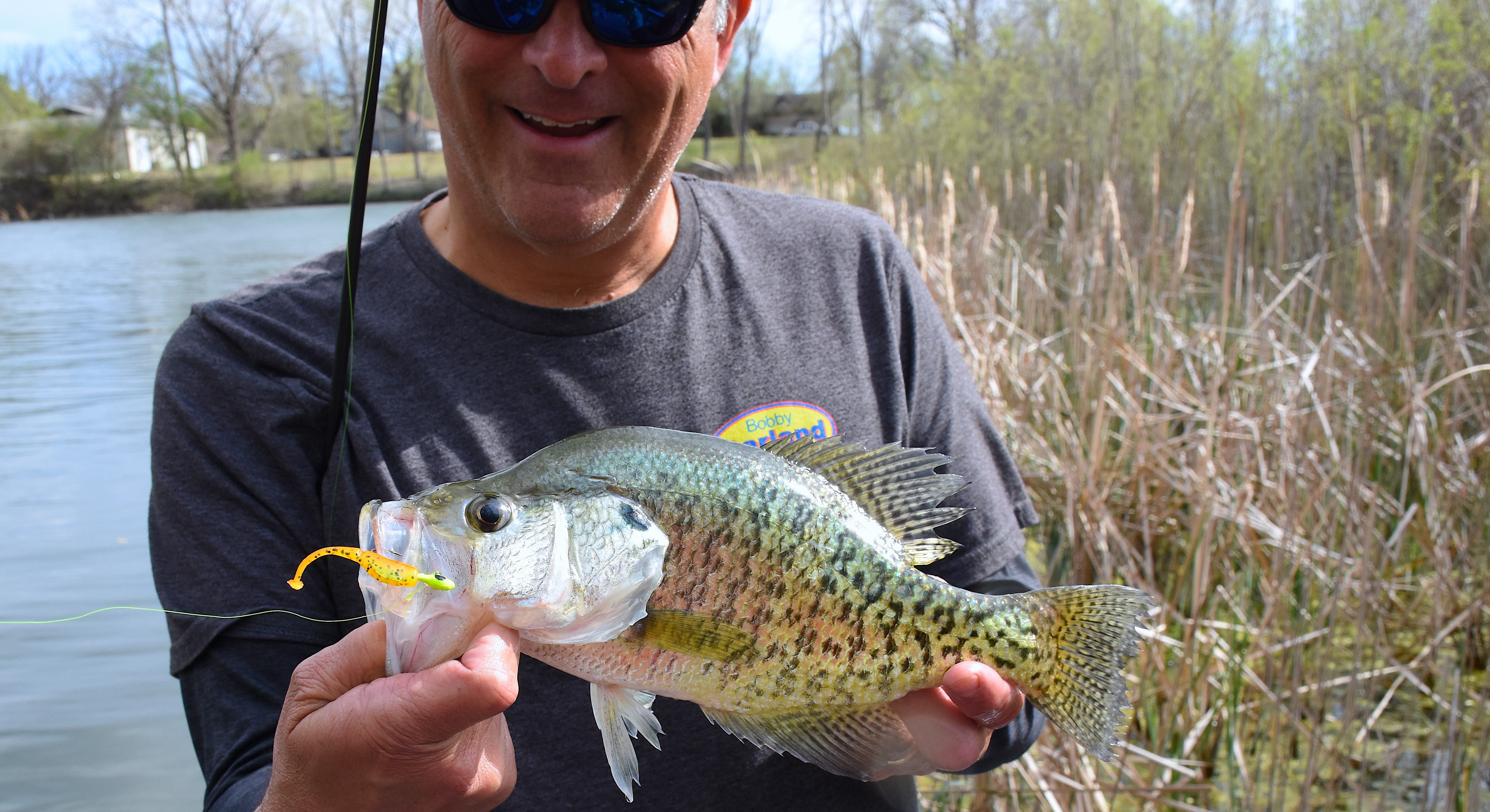

Closely related to color, glow provides significant benefit for many crappie fishing situations. It’s so significant to the folks at Crappie Pro, in fact, that the brand’s flagship series, Mo’ Glo Jigheads, highlights that feature in the name. Whether Pink, Orange, Blue, Ghost or Chartreuse, these heads all take a charge and glow brightly.
Glow jigheads provide obvious added value after the sun goes down, but benefits don’t end there. A glowing head is easier for fish to see and provides a target even in moderately low light conditions as well as in stained to muddy water. While night-fishermen are very intentional about regularly charging the glow of their jigheads, Mo’ Glo heads naturally pick up charge during the day whenever they are out of the water.
Decoration details can make a difference as well. For example, Mo’ Glo jigheads all have oversized black eyes, to imitate a baitfish and to give crappie a definitive target.
Looking past color and decoration variables, head shape helps distinguish one jighead from another. Ball heads, mushroom heads, pointed heads and other shapes all create different profiles and impact bait presentations.
Crappie Pro chose an elongated, flat-sided head shape in part for a natural minnow or shad appearance. In addition, that head shape, along with the positioning of the eye and its 90-degree angle, causes a Mo’ Glo Jighead to hang horizontal in the water column, even when attached with a loop knot. That is important or vertical jigging, dipping, spider rigging and any other technique where the jig hangs from a vertical line.
A final factor that helps distinguish one crappie jighead from another is the hook itself. Crappie Pro Mo’ Glo jigheads have slightly larger hooks than most crappie jigs of the same weights based on demands of veteran anglers. Crappie have fairly large mouths. They also have soft mouths toward the edges, though (hence the common nickname, “papermouths”), and hooking them a bit deeper in the mouth equates to higher landing percentages. Crappie Pro hooks are not super-fine wire like many crappie jigheads, but they have a very sharp point that penetrates like a small-wire hook.
Bobby Garland Itty Bit Jigheads, which are tiny at 1/48 and 1/64 ounce and were designed to match with Itty Bit crappie baits, have a No. 8 hook, which is larger than is normally found in jigheads that light.
Why the Unusual Shape?
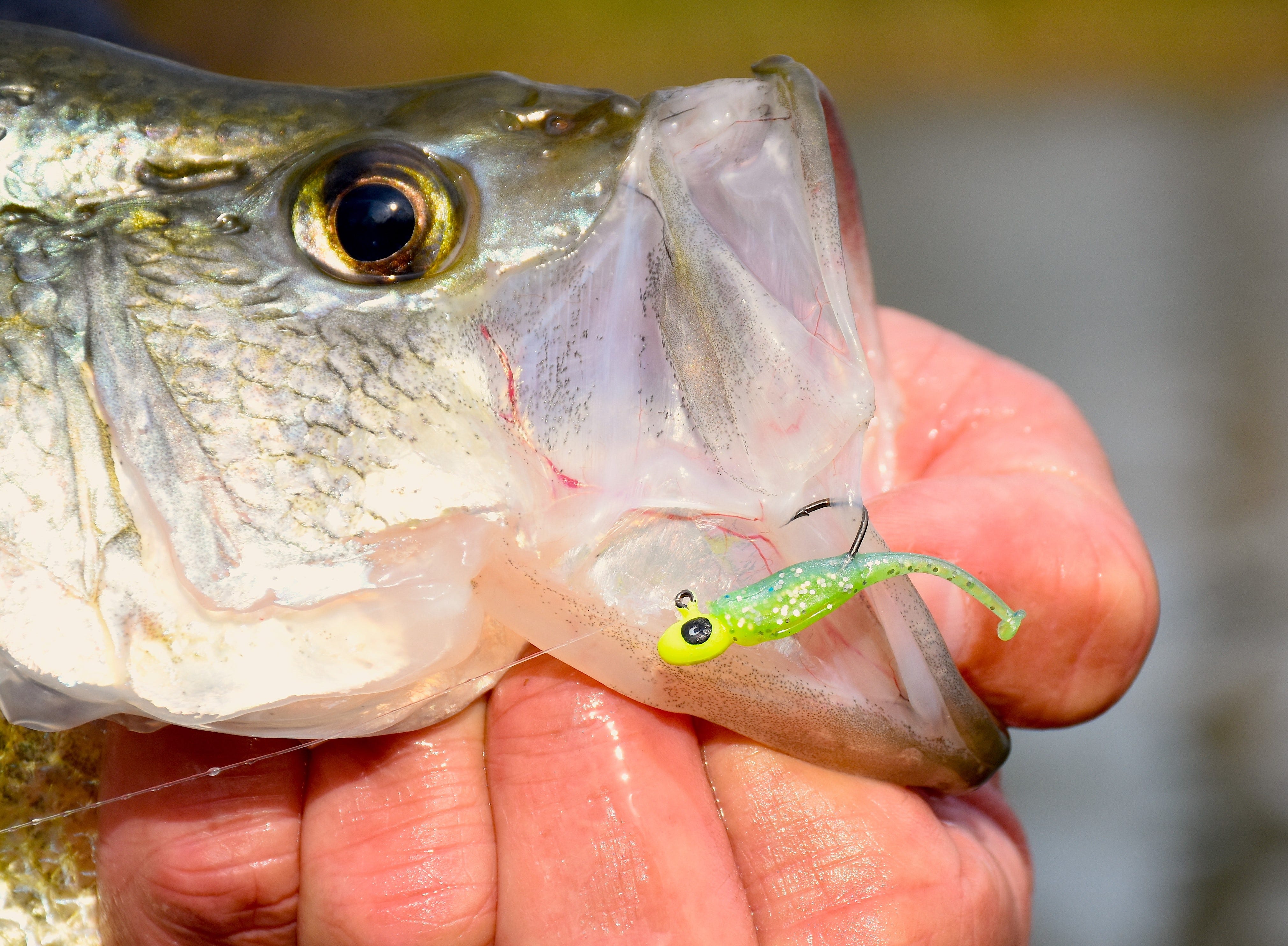

When anglers look at Crappie Pro Overbite Sickle Jigheads for the first time, a common initial response is a simple question of “why.” The brand’s reputation for producing premium jigheads for crappie fishermen is such that most anglers don’t doubt there’s a good purpose. They just don’t know what it is.
Sickle heads are built the way they are to provide a short shank relative to the size of the bend. This makes them fit small soft-plastic baits, allowing those baits to move naturally, but still have a sufficiently large bend to hook crappie and keep them hooked.
Must micro-sized heads have very small hooks – smaller than you might want for many crappie fishing situations – and a “normal” jighead hook with a crappie-suitable bend doesn’t lend itself to proper rigging with an Itty Bit Baby Shad Swm’R or Itty Bit Slab Slay’R. Even moderately small baits, like a Hyper Grub or Baby Shad, benefit from more freedom, with a shorter section of hook shank running through the bait.
Overbite Sickle Jigheads, which use the same head shape eye angle and glow paint as Mo’ Glo Jigheads, offer the best of both worlds for rigging extra-small soft plastic baits, and they come in 1/16-, 1/32 and 1/48-ounce sizes. Originally, only the two smaller sizes were available, but anglers were quick to request the same head in 1/16-ounce, so they could rig very small baits on that size head.
Designed for Shooting
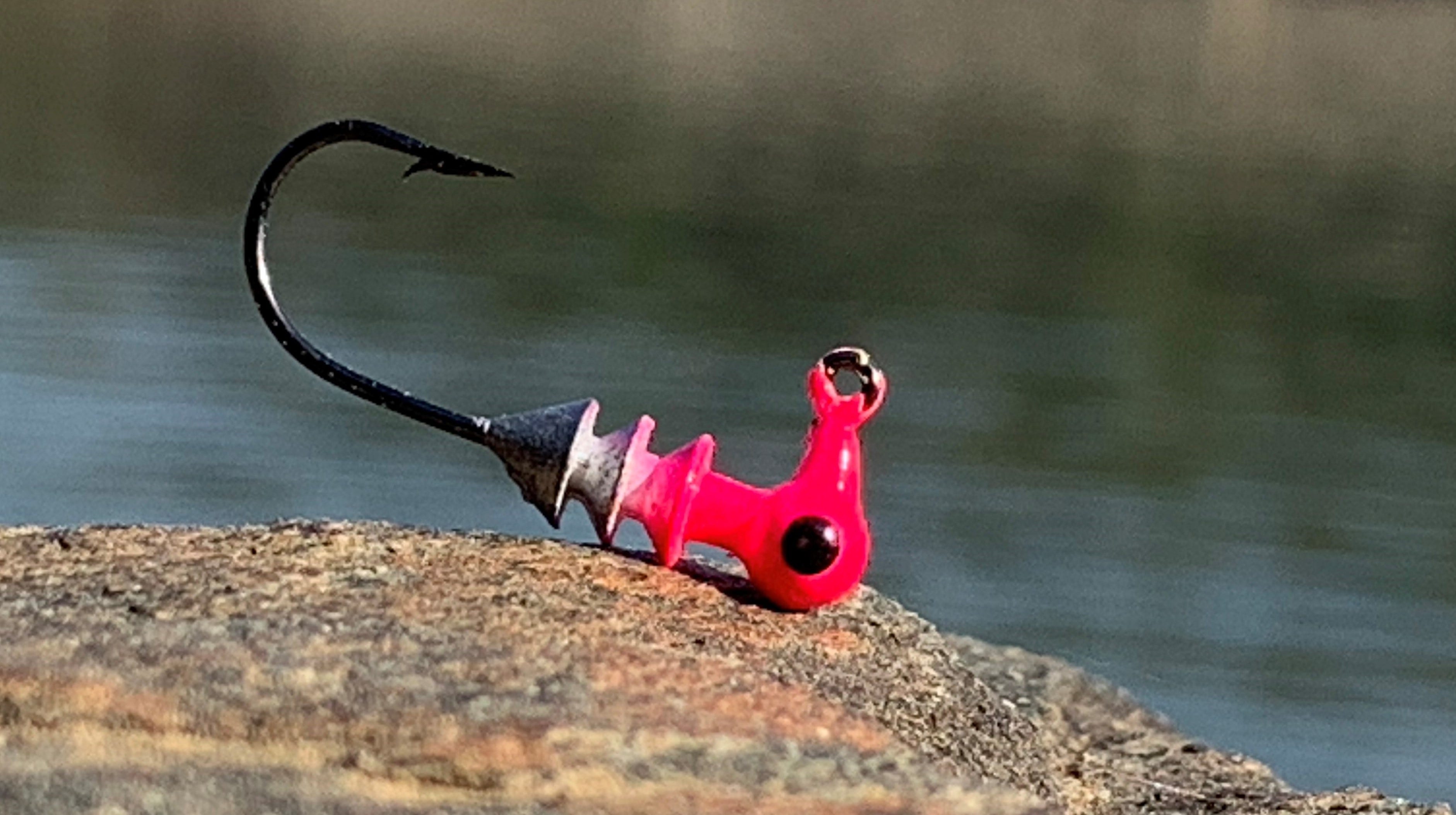

Crappie Pro Head Dockt’R Jigheads are highly specialized in their design. They were designed for one technique – dock shooting – from sizes offered to the shape of the head to the bait-holding design.
The most obvious design distinction is the multi-collared keeper on the long hook shank. This is critical for keeping baits from slipping down the hook with repeated shots and skips.
The collars or barbs also distribute this jig’s weight along the hook so the bait falls horizontally in the water column and keeps all the weight from being in the front, which would make it more difficult to skip the bait effectively. Again, for the sake of balancing the weight, this jig has a very small round head. In fact, the 1/24- and 1/32-ounce heads are tough to distinguish by head size. The difference in their weights comes from an extra collar along the hook.
Please visit Lurenet.com to stock up on crappie baits, jigheads and other lures and to view more how-to content.
